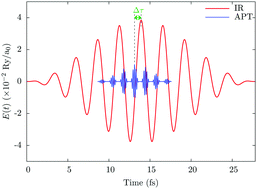Towards the analysis of attosecond dynamics in complex systems
Abstract
We study from a theoretical perspective the ionization of molecules and clusters induced by irradiation of a combined two-color laser field consisting of a train of attosecond XUV pulses in the presence of an IR field. We use time-dependent density-functional theory (TDDFT) in real time and real space as a theoretical tool. The calculated results are compared to experimental data when available. We also compare TDDFT with results obtained using a time-dependent Schrödinger equation (TDSE), which is well suited to simple systems while TDDFT allows dealing with more complex molecules and clusters. As a key observable, we study ionization versus delay time of the XUV pulses with respect to the IR background pulse. Experiments in simple atoms (He and Ar) show a regular modulation of this signal with half the IR period. This feature is recovered by TDDFT as well as by the TDSE (although total ionization differs by an order of magnitude). As more complex systems, we consider a C3 chain molecule and Na clusters. Here we encounter a different picture as the ionization signal develops a more involved pattern with several peaks per half IR period and as the TDSE produces a different pattern to TDDFT. Both effects could be related to the appearance of strong resonance modes in these more complex systems.

- This article is part of the themed collection: XUV/X-ray light and fast ions for ultrafast chemistry


 Please wait while we load your content...
Please wait while we load your content...